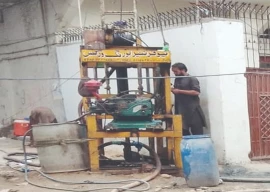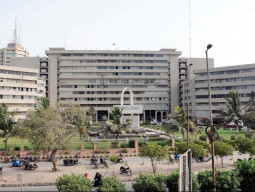
Right beside the village is a vast mound that covers more than twice the surface area of the settlement itself. The Sindhi word for mound is ‘daro’ and this gives the settlement its name — Daro Labara; the Labaras of the Mound — in the same manner as the ‘daro’ in Mohenjo-Daro.
The mound is about a mile in length, half a mile in width at one end and less than a quarter mile in width at the other end. With gradual ease, it rises to a height of approximately 30 feet. Locals are of the view that the mound may have been created by the debris of a village that stood here in the not-so-distant past. Although it is near impossible to locate records on past settlements in the area, the notion is questionable. Other sites of abandoned villages have no mounds in their midst. Some villages are built on high ground so as to provide protection from flooding, but Daro Labara is not located on the mound so much as at the foot of it. For such a mound to be created by the debris of a recent village, the village would have had to have unusually high buildings.
Outside the village, in the middle of a cultivated field, a very small, isolated mound rises out of the levelled earth. It is an uncommon occurrence in a tilled acre and it appears that farmers have had to work their way around it rather than over it.
These mounds, as well as the much larger ones that lie 10 kilometres west of Larkana and are known as Jhokar-jo-Daro, are similar in appearance to the unexcavated mounds at the site of Mohen-jo-Daro.
The Sindh Department of Antiquities must solve the mystery of the mounds at Daro Labara through archaeometry. It must license a visit by its team of archaeologists, along with historians such as Valeria Fiorani Piacentini and Monique Kervran, who are currently involved in the annual excavation of the ruins at Bhambore.
Published in The Express Tribune, May 10th, 2016.


















COMMENTS
Comments are moderated and generally will be posted if they are on-topic and not abusive.
For more information, please see our Comments FAQ